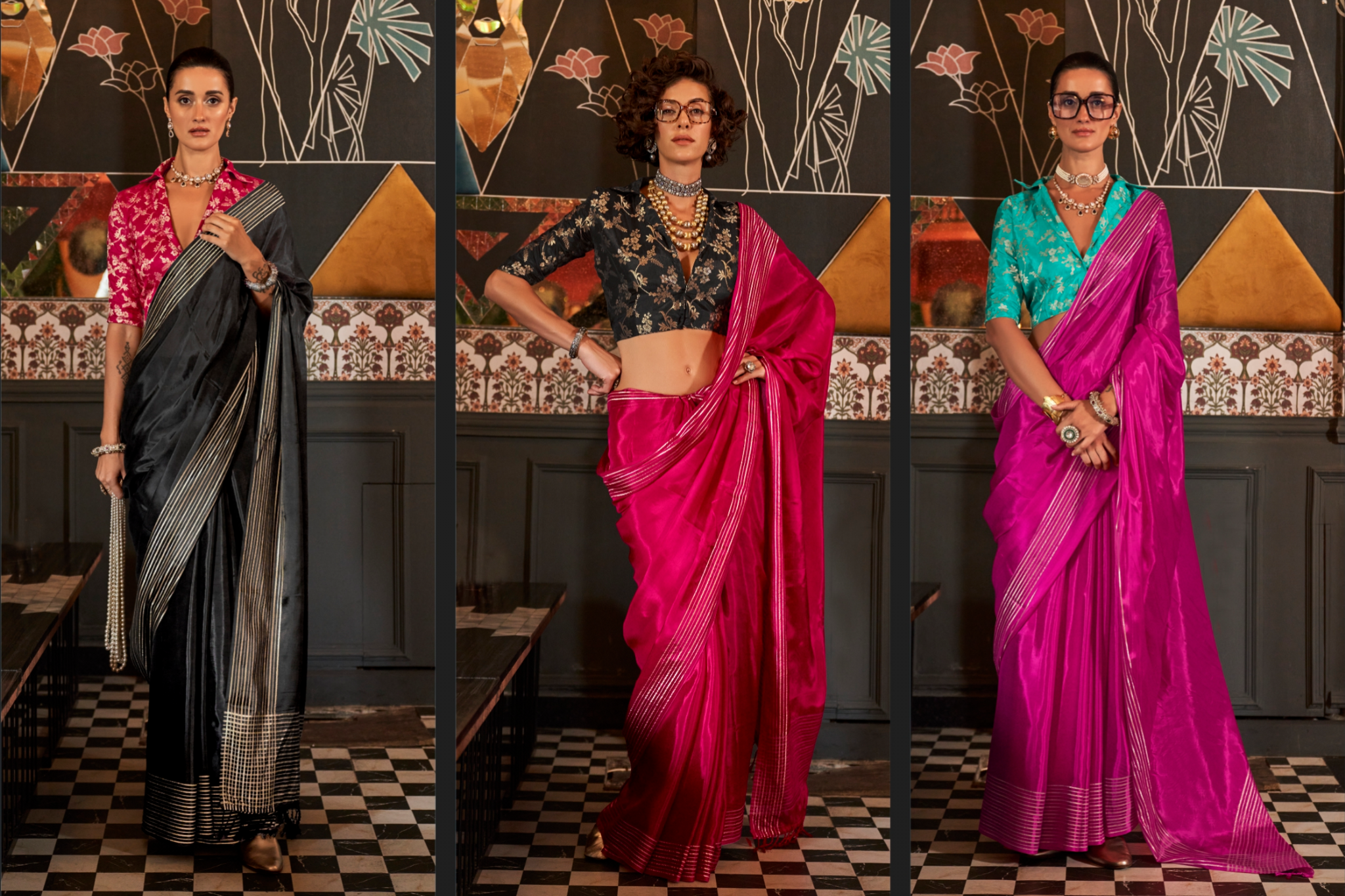Exploring the Timeless Elegance: Saree Styles Famous in South India
South India is renowned for its rich cultural heritage, vibrant traditions, and exquisite craftsmanship, especially when it comes to sarees. The saree, a quintessential Indian attire, holds a special place in the hearts of South Indian women. Among the myriad of saree styles prevalent in the region, two stand out prominently: Kanjeevaram and Ilkal sarees. In this blog post, we delve into the allure and significance of these traditional sarees, along with a glimpse into other notable styles that adorn the South Indian landscape.
Kanjeevaram Sarees:
Origin: Kanjeevaram sarees, also known as Kanchipuram sarees, hail from the town of Kanchipuram in Tamil Nadu. Renowned for their exquisite craftsmanship and rich silk fabric, Kanjeevaram sarees are coveted for their opulence and timeless appeal.
Design and Craftsmanship: One of the distinguishing features of Kanjeevaram sarees is their heavy silk fabric adorned with intricate zari work. The borders are typically embellished with traditional motifs such as peacocks, elephants, and temple designs. The pallu (the loose end of the saree) is intricately woven with elaborate patterns, making each Kanjeevaram saree a masterpiece of artistry and skill.
Significance: Kanjeevaram sarees hold immense cultural significance in South India, often donned by brides during weddings and other auspicious occasions. The richness of the silk fabric and the intricacy of the designs symbolize prosperity, tradition, and heritage.
Popularity: These sarees are not only popular in South India but also revered across the country and beyond. Celebrities and fashion enthusiasts alike are drawn to the timeless elegance of Kanjeevaram sarees, making them a cherished heirloom for generations to come.
Ilkal Sarees:
Origin: Ilkal sarees trace their origins to the town of Ilkal in Karnataka. Unlike the grandeur of Kanjeevaram sarees, Ilkal sarees exude a rustic charm with their distinctive weaving technique and simple yet elegant designs.
Weaving Technique: Ilkal sarees are woven using a unique technique called the 'kasuti embroidery' which involves interlocking cotton and silk threads to create intricate patterns. The pallu of the saree is adorned with contrasting colors and geometric motifs, giving it a distinct identity.

Versatility: Ilkal sarees are known for their versatility and comfort, making them suitable for both formal occasions and everyday wear. The lightweight fabric and breathable texture make Ilkal sarees a preferred choice, especially in the hot and humid climate of South India.
Cultural Significance: These sarees are deeply rooted in the cultural heritage of Karnataka and are often worn during festivals, rituals, and traditional ceremonies. The simplicity of Ilkal sarees reflects the ethos of rural life and the essence of simplicity and grace.
Revival: In recent years, there has been a renewed interest in traditional handloom sarees like Ilkal, with designers and artisans striving to revive and promote these indigenous crafts. The resurgence of interest not only preserves the rich cultural heritage but also provides livelihood opportunities for local weavers.
Other Notable Saree Styles in South India:
While Kanjeevaram and Ilkal sarees dominate the South Indian saree landscape, several other styles hold significance and charm:
-
Pochampally Sarees: Originating from Telangana, Pochampally sarees are known for their intricate geometric patterns and vibrant colors. These sarees are crafted using the ikat dyeing technique, resulting in unique designs that reflect the region's rich artistic tradition.
-
Mysore Silk Sarees: Mysore silk sarees are synonymous with luxury and elegance. Woven from pure silk, these sarees are characterized by their soft texture, rich colors, and intricate zari work. They are a favorite choice for weddings, festivals, and special occasions.
-
Kerala Kasavu Sarees: Kerala Kasavu sarees, also known as Mundum Neriyathum, are traditional sarees worn by women in Kerala. Crafted from fine cotton fabric with golden zari borders, these sarees exude simplicity and grace. They are often worn during religious ceremonies, cultural events, and festive occasions.
-
Kota Doria Sarees: Hailing from Rajasthan but popular in South India, Kota Doria sarees are known for their lightweight and transparent texture. These sarees are woven with fine cotton or silk yarn, creating a delicate and airy fabric that is ideal for hot and humid climates.
Conclusion:
The saree holds a special place in South Indian culture, symbolizing tradition, elegance, and grace. From the grandeur of Kanjeevaram sarees to the rustic charm of Ilkal sarees, each style reflects the rich cultural heritage and artistic craftsmanship of the region. As we celebrate the diversity and beauty of South Indian sarees, let us continue to cherish and preserve these timeless treasures for generations to come.
Discover the timeless elegance of South Indian sarees with Nitaraa's exquisite collection, where tradition meets contemporary style.


